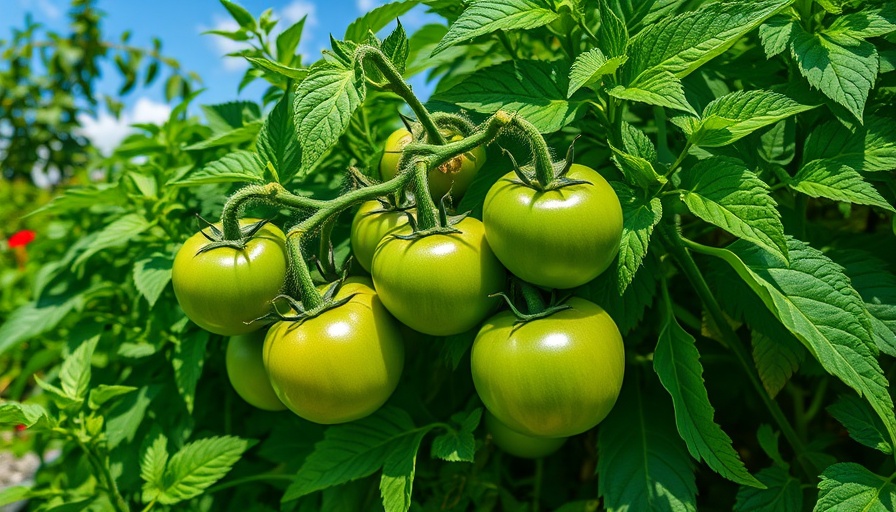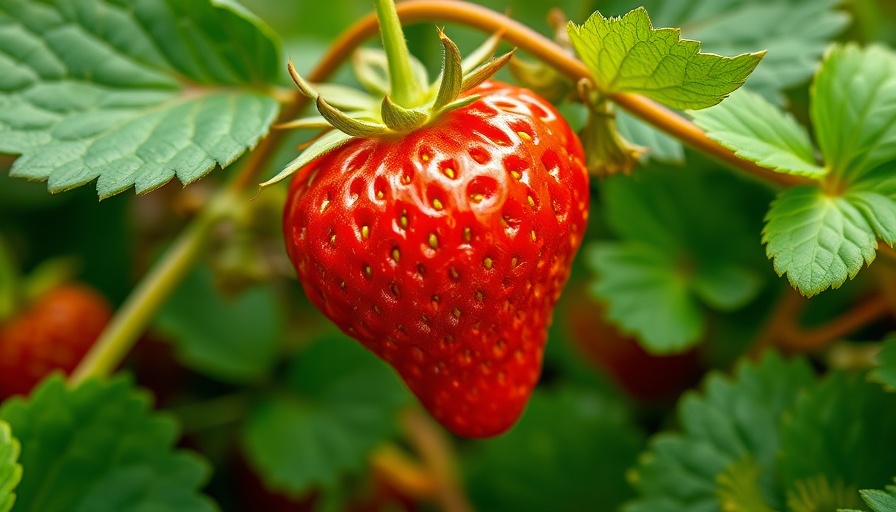
Understanding the Challenges of Cold-Climate Gardening
As gardeners in cooler climates prepare their green spaces for spring, the fluctuating weather can present a formidable challenge. In Saskatchewan's Zone 3, for instance, temperatures can dip unexpectedly, affecting newly planted gardens even as the calendar turns to May. Many gardeners, already excited for summer, may find themselves questioning their decisions if hit with unseasonably cold weather like this year’s unpredictable climate fluctuations.
In Cold Climate Garden in May – Surprising Growth This Early! Zone 3!, the discussion dives into the challenges of gardening in cooler climates, exploring key insights that sparked deeper analysis on our end.
Making the Most of Microclimates
Understanding microclimates within your garden can give your plants a significant advantage. The video Cold Climate Garden in May – Surprising Growth This Early! Zone 3! highlights this by recounting experiences of different growth rates between the front and back yards due to varying sunlight exposure and soil warmth. By strategically planting in areas that receive the most light, or by using structures like low tunnels or cloches for protection, gardeners can create pockets of warmth that foster growth even when temperatures elsewhere remain chilly.
Soil Preparation: The Foundation of a Great Garden
Soil health is paramount in gardening, especially in colder climates. The video details a methodical approach to soil prep, highlighting the importance of roughening up the soil surface for optimal seed contact. The inclusion of organic material, such as compost and manure, not only enhances soil nutrients but also maintains moisture levels, vital for ensuring healthy plant development. For Okanagan gardeners, trying to achieve that perfect soil mix can make a noticeable difference as they enter the growing season.
Timing is Everything: Knowing When to Plant
In colder zones, precise timing for planting is critical. The video draws attention to the fact that many have been led astray by shifting last frost dates, particularly in Saskatchewan, where it jumped a full month to mid-May. Gardening enthusiasts should remember that just because a date suggests it might be time to plant doesn't mean they should do so indiscriminately. Cold-tolerant crops can handle early planting, but waiting for warmer conditions is essential for sensitive species like tomatoes. Prioritize ensuring your plants have the necessary temperature range both day and night to thrive.
Build Resilience: Adapting Your Gardening Strategy
The video encourages gardeners to use flexibility and innovation to adapt their gardening strategies. In the face of cold snaps, gardeners can create microclimates by covering vulnerable plants with buckets or using garden fabric for insulation. This approach not only protects plants from shock but also encourages more vigorous growth as they remain shielded from harsh conditions. For Okanagan gardeners, making use of such protective measures can ensure a successful growing season despite unpredictable frost and rain.
Incorporating Technology for Better Gardening
Modern gardening tools and resources enhance the gardening experience significantly. The use of self-watering containers and temperature-controlling devices can alleviate some of the stress associated with maintaining optimal growing conditions. Investing in durable, high-quality gardening products, as mentioned with brands like Teimu, allows gardeners to focus more on plant care than infrastructure. For the tech-savvy gardener in the Okanagan, these advancements can support a more successful and enjoyable planting season.
Finding Community in Gardening
The journey of gardening can often feel isolating, especially for those starting out or facing setbacks. The video creator shares their experiences of connecting with local gardeners, underscoring the importance of community support in navigating challenges. Responding to others’ inquiries and facilitating discussions can strengthen the local gardening knowledge base, making everyone more successful in their endeavors. Gardening groups or clubs can prove invaluable for Okanagan gardeners to share tips, resources, and camaraderie.
Conclusion: Embrace the Art of Gardening
As spring unfolds, every gardener faces their own unique set of challenges dictated by their environment. Staying informed, engaged with fellow gardeners, and adapting to changing conditions is key to creating a flourishing garden. For those in the Okanagan region, the blend of local community and innovative gardening solutions can open new pathways to successfully navigate the joys and trials of gardening. You have the tools available—now embrace them!
Reflecting on the insights from the video, remember that the gardening experience is not just about the result but also about learning, adapting, and growing alongside your plants. So why not get out into your garden, test new methods, and engage with your local community?
 Add Row
Add Row  Add
Add 




Write A Comment